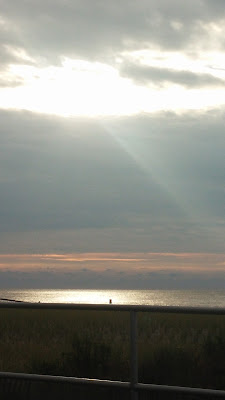It was such a beautiful guided visualization in class this week about the body lying at the edge of the surf and then transported to the ocean waters. I hope that each of you were able to relax into those moments and discover peace.
You may have noticed that Carmen and I check in with each of you during the beginning moments of each pose. We may ask if you are comfortable, do you need more support under or around you, do you need to change position. We continue to observe how each of you are doing in each pose. Some things we may observe is the rising and falling of the breath, if there is any tension in the face or around the eyes, are shoulders, spine, head supported, is one side of the body higher than the other, is the body leaning to one side, we may see that the ribs are sticking out, or the limbs are out of alignment.
99 percent of our restorative poses are practiced in tadasana alignment where our joints, bones and even muscle groups are arranged in a straight line or appropriate positions relative to each other. This is important for the circulation of blood, flow of energy, organ function, health of our joints, maintenance of our bones. Tadasana is centering bringing breath and physical body together. Tension has an easier time of releasing as the body does not have to work against itself. Patanjali the father of yoga describes Tadasana as a steady and comfortable position. In Restorative, we set up the poses to be comfortable, not using muscular energy so that we can tap into the deeper parts of ourselves without the distractions of the physical. That being said, keep in mind, that not all restorative poses are comfortable from the get go. This is why we, meaning the teachers and you, the student check in with what is happening and make necessary adjustments.
When properly aligned, the person has the opportunity to then explore what is happening in their mind and their heart. Sensations may appear in the body from those places of exploration. We use techniques like guided visualizations, imagery, Yoga Nidra, breath, mindfulness even physical props to support this journey inward. You may have noticed in our last class, when we covered you with a blanket during savasana, that you felt a letting go. Jillian Pransky in her Restorative Teacher Training, states that “It is good practice to always use a blanket to cover the body for the final relaxation pose, and if possible, all poses. The blanket not only keeps the body heat in, but also helps the nervous system relax and release tension. The weight of the blanket can add a feeling of security and safety.
The next time you attend a regular yoga class, if you do, try aligning your body in a supine tadasana and covering yourself with a blanket and notice how much deeper your savasana is. Enjoy!
The Poses
Reclined Bound Angle (Supta Baddhakonasana)
Nesting Pose
Props: blankets, bolster


Leave A Comment